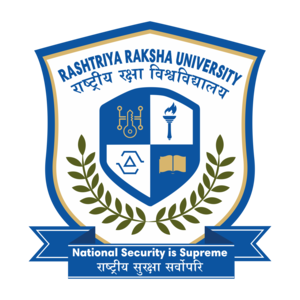
Ground Water Contamination and Environmental Concerns
GROUND WATER CONTAMINATION AND ENVIRONMENTAL CONCERNS
- Saumya
More than 1.2 billion people in the entire world lack access to clean drinking water.According to the WHO, 80% of all diseases in the developing countries results from contaminated water. Among the limited resources available for access to clean water, groundwater is the most sought-after because of its easy availability and sterile nature. However, it is losing its idiosyncrasy at a rapid rate. Ground water contamination is one of the major environmental problems of the decade. It basically becomes ill-suited and hazardous for human use when harmful materials like road salts, oil and chemicals get into the groundwater. For ex. Fertilisers and pesticides easily get washed away in groundwater. However, not only does this contaminated water has adverse effects on human beings, but on the environment as a whole.
REASONS FOR GROUNDWATER CONTAMINATION
If we examine the reasons for ground water contamination, there are many. The most common one is Industrial effluents. The rapid discharge of such wastes without any sort of regulation is causing a great danger to marine bodies and animals. Another is septic system.At a steady pace, it drains human waste underground. Unless it is placed and built correctly, household chemicals, bacteria, and viruses may spill into the water and thus can cause serious problems. Next in picture is a Landfill. Landfills are burial ground for garbage; we take the general scenario; landfills should have protective layer in the bottom so that contaminants are prevented from getting into water. However, generally there are no such layers present for the disposal of such waste and the waste make their way easily into the ground water. There are several products used in farms and fields to wipe out insects and weeds. When it rains, these chemicals seep into the ground and eventually into water. The detrimental effect it causes is incalculable.
The reason such contaminants are much more toxic is that they overpower the soil\'s natural capacity to flush out toxins, so the contaminants move through the soil in a shorter period than required for species in the soil to decompose it. Nitrate is one of the most common pollutants in groundwater, it leaches into the soil and eventually gets into the water supply from a variety of sources. Nitrate is found naturally in the soil and penetrates deeper when the soil is heavily cultivated. Many toxins include Radon, Boron, and Arsenic. As a micronutrient, boron is necessary for plants but it becomes toxic when it is put in large proportions. Arsenic is anelement used in wood preservatives, pesticides, herbicides and farm chemicals. It was found to be highly toxic to the humans— a little amount of 100 milligrams, if gulped usually contributes to extreme intoxication. Leakage of tanks and sewers often unintentionally causes groundwater harm.
ENVIRONMENTAL CONCERNS
It is pertinent to note that while there are chances of surface water contaminants breaking down by exposure to natural oxidants (oxygen and sun light), or biologically degraded, the same is not the case with ground water as groundwater environment is dark, oxygen-deficient and cool.It has less self-cleansing ability. This makes its contamination even more dreadful and a cause of worry for the environment.
Several estuaries have been jolted by loss of shellfish habitats due to the impact of high nitrogen in groundwater sources. In a healthy environment, species rely on a complex network of animals, plants, bacteria and fungi to survive-all of which communicate with each other, directly or indirectly. Damage to each of these species may build a chain that could imperil entire aquatic ecosystems. If animals, in any way ingest this contaminated water, they can pass on a number of diseases to other living beings. An example of this can be shellfish. Shellfish feeds on the material which has the potential to filter the water.As a result, their edible tissues get accumulated with viruses over time. When they are harvested from water which is contaminated from virus and consumed,it leads to severe outbreak in environment and a great threat to human health.
Owing to mining, smelting, heavy use of agricultural fertilizers and pesticides and industrial effluents, soil pollution by heavy metals such as cadmium, nickel, zinc etc. has risen significantly over the last few decades. This causes land degradation and ultimately unfavourable consequences on the environment.When metals channel into plants that are growing, and when they are consumed by humans and animals, it results in a toxic effect on their health.Heavy metals are barely water-soluble, and cannot be degraded; they continue to accumulate in soils, and then in plants. If consumed, these plants can cause toxicological issues in men, women and children. Just think of the scenario of these toxic plants being eaten by human beings.
While examining the case of Northern California, a breath-taking fact was encountered. The people living near coal power plants were told by the state that their water had high levels of chromium -6 and other toxic materials. Although environmentalists and the state government are working to examine the source of pollution, the number of people who rely on bottled water to drink, cook and brush their teeth is almost 1000. Again, this is a concern. Plastic bottles are usually made of polyethylene terephthalate which takes 400 years to decompose naturally. Most plastics end up either in an ocean or in the landfill. If these plastics accumulate at a depth in landfills, they can easily drain the deleterious chemicals in groundwater. Wildlife is also harmed or contaminated by plastic debris which contains chemicals and sometimes, it becomes a source of consumption for marine organisms as well.
The reason why these sources of contamination is an immense cause of concern is because to clean a source after contamination is extremely perilous and extravagant.The goals set up in order to clean ground water have not been achieved by traditional means. It can lead to high cost of alternative water supplies and increase health related issues.If we drink water which contains bacteria and viruses, we are on the verge of coping with illnesses like cholera, hepatitis and or giardiasis in human beings.
WAYS TO PREVENT THE CONTAMINATION OF GROUNDWATER
i. It has been found that if there is a considerable distance between groundwater and the source of contamination, then likely scenario is that results of contamination will automatically be reduced by natural processes.There are processes like Biological degradation, absorption oxidation. These processes make contaminants less toxic.Since these zones are capable of absorbing contaminants and can help in reducing it before it reaches ground water, proper measures should be taken to create such zones.
ii. ISCO method has gained a lot of ground due to its effectiveness. ISCO (In Situ Chemical Oxidation) is a process in which it is required that chemical oxidants should be delivered to the surface o that they can destroy organic compounds. (e.g. fuels or chlorinated organic solvents) and thus decreases the risk of damage.If the concern is bacterial or parasitic infection, the water may be treated with chlorine which works as a promising disinfectant.
iii. Treatment systems that provide water for human use should be installed in outlets. The methods include boiling, solar distillation, filtration, ozone gas disinfection, controlled charcoal absorption, and ultraviolet disinfections. Usually arsenic removal filters are used to remove the presence of arsenic compounds.Maintenance of these filters is important in order toensure a drinking water.
iv. Individuals have to be made aware about their role in protection of ground water by educational programmes regarding proper use and disposal of house hold and outdoor chemicals, and proper installation and operation of septic tanks.
v. Several acts introduced by the government needs proper and stricter implementation. For example,the Water Prevention and Control of Pollution Cess Act, 2003 and the River Boards act,1956. Under these rules, if water is polluted by any industry via discharge of poisonous or non-biodegradable substances while processing such products, these industries are forced to pay cess under this regulation.However, penal consequences are still outdated for such disastrous acts which is the need of the hour.
REFERENCES :-
1. United statesenvironmental protection agency data<https://www.epa.gov/sites/production/files/2015-08/documents/mgwc-gwc1.pdf> accessed 6th April 2020.
2. Yatsuka Kataoka and Gemunu Herath,’Rationalisation of Industrial Sector Water Use is the Key to Sound Groundwater Management’<https://www.jstor.org/stable/resrep00869> as accessed 3rd April 2020.
3. Wiley Stable,’Conquering groundwater contamination Source’ Journal<https://www.jstor.org/stable/41271186> as accessed 4th April 2020.
4. JessicaA. knoblaunch,‘The environmental toll of plastic’ <https://www.ehn.org/plastic-environmental-impact-2501923191.html> accessed 4th April 20202
5. Theng Theng fong and Erin K. Lipp,’ Enteric viruses of humans and animals in aquaticenvironments’<https://mmbr.asm.org/content/mmbr/69/2/357.full.pdf>accessed 5th April 2020.












